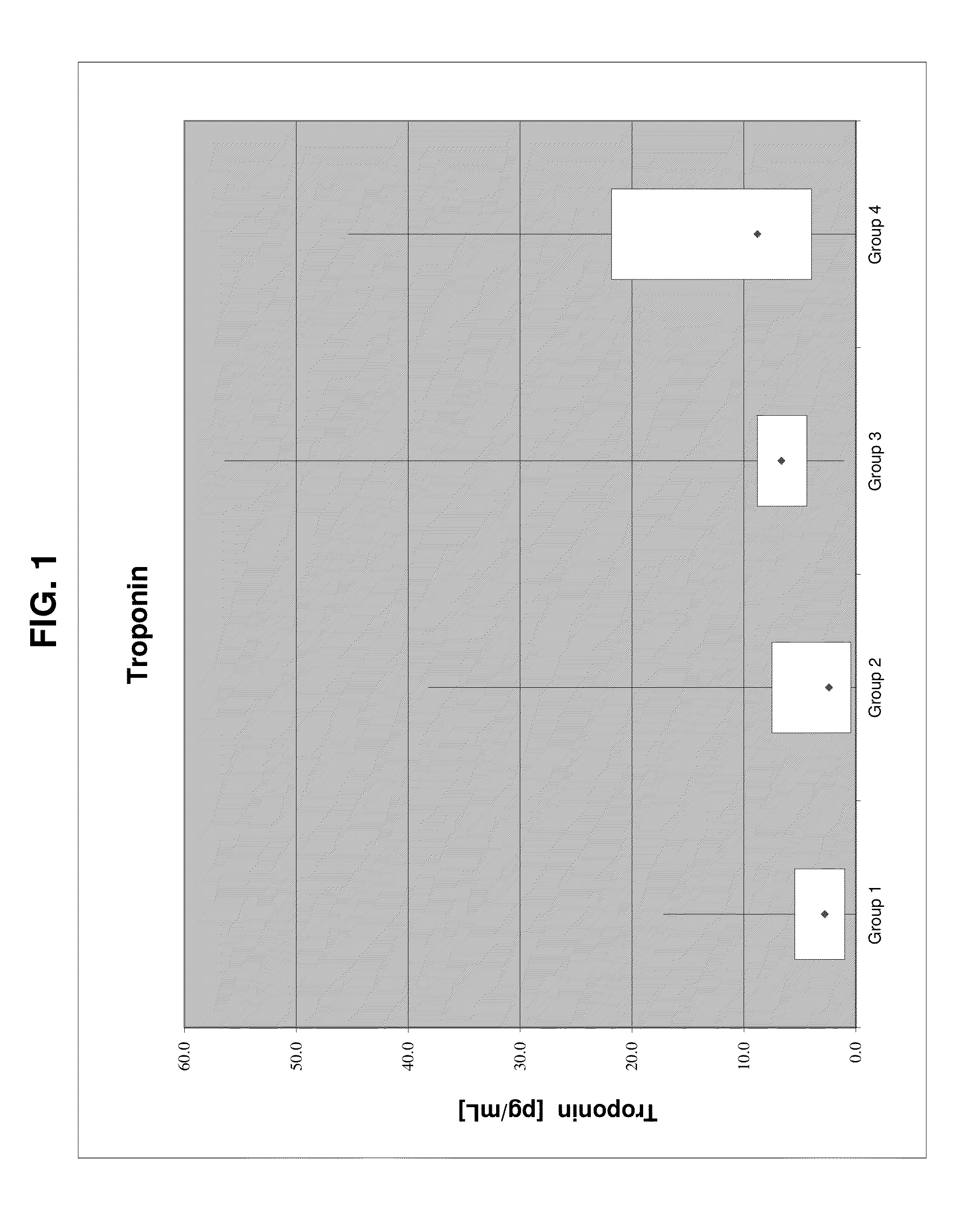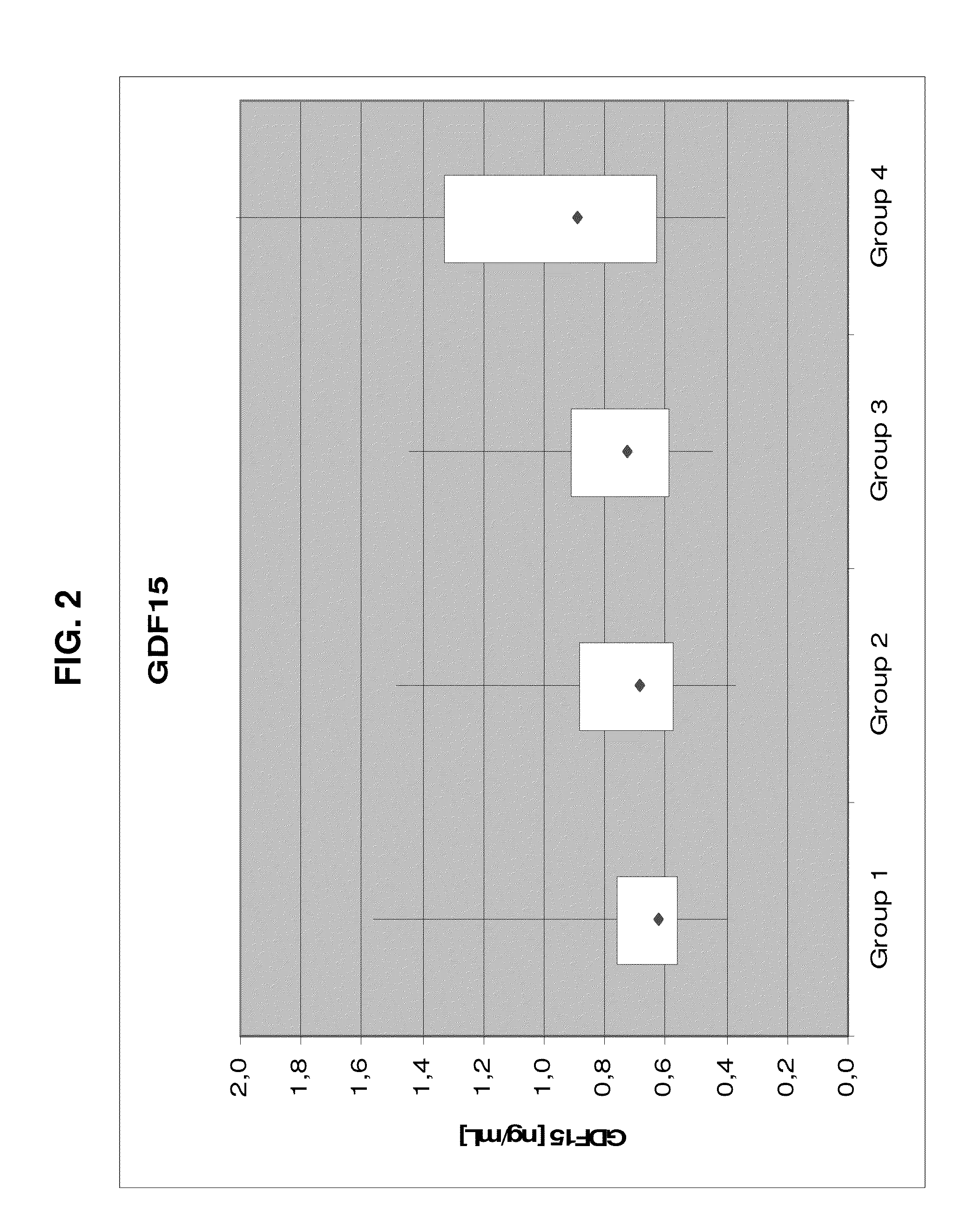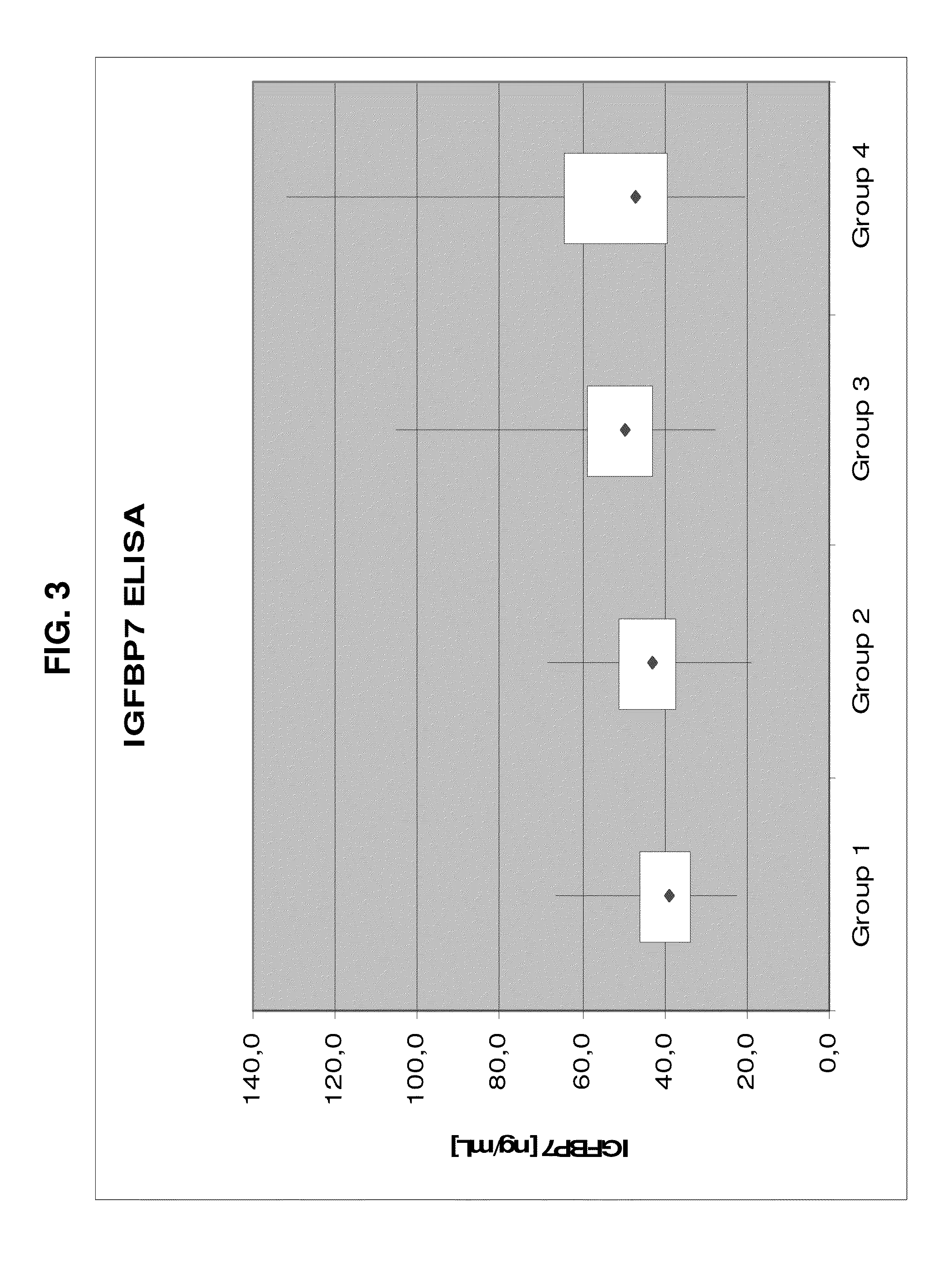Use of biomarkers in the assessment of the early transition from arterial hypertension to heart failure
a biomarker and early transition technology, applied in the field of early transition from arterial hypertension to heart failure, can solve the problems of poor diagnostic capability, inability to diagnose individuals suffering from presymptomatic forms of hf, and major and growing public health problems
- Summary
- Abstract
- Description
- Claims
- Application Information
AI Technical Summary
Benefits of technology
Problems solved by technology
Method used
Image
Examples
example 1
[0520]Troponin T, NT-proBNP, GDF 15 and IGFBP7 were determined in the following collectives of individuals. An informed consent of the patients has been obtained.
[0521]Group 1: normotensive subjects, n=32.
[0522]Group 2: hypertensive subjects bearing risk factors of suffering from heart failure (stage A), n=47.
[0523]Group 3: hypertensive subjects with functional and / or structural abnormalities of the heart preceding heart failure, (early stage B); the subjects did not have elevated NT-proBNP levels the subjects showed structural changes to the left ventricle (increased septum wall thickness (>11 mm), increased posterial wall thickness (>12 mm), or first signs of either hypertrophy or concentric hypertrophy) and / or the subjects showed a systolic dysfunction (LVEF <50%) and / or diastolic dysfunction with preserved ejection fraction LVEF of at least 50%, n=37. The subjects did not suffer from left ventricular hypertrophy.
[0524]Group 4: subjects with dilated cardiomyopathy (DCM), n=29.
[05...
example 2
[0552]Troponin T, NT-proBNP and GDF-15 were determined in the below-described collective of individuals. A total of 97 patients with overt heart failure were included into the study, mean age 60.9 years, 52 males, 45 females, LVEF below 50%, who had a normal kidney function as documented by normal creatinine levels. All patients were on beta blocker as well as on ACE inhibitor therapy, 59 patients were on aldosterone antagonists, 38 did not receive aldosterone antagonists. Patients were treated in the study according to guidelines (see above). None of the patients suffered from diabetes mellitus or metabolic syndrome, in addition none of the patients suffered from liver disease or malignancies.
[0553]38 patients receiving no aldosterone (all Class C) had the following characteristics:
TABLE 11Marker concentrations in 38 patients receiving no aldosterone.ratioNT-proNT-proratioBNPTroponin TGDF-15LVEFNYHABNP / GDFTroponinPercentile(pg / mL)(pg / mL)(pg / mL)(%)class15T / GDF 15251571.7663571.00.19...
PUM
 Login to View More
Login to View More Abstract
Description
Claims
Application Information
 Login to View More
Login to View More - R&D
- Intellectual Property
- Life Sciences
- Materials
- Tech Scout
- Unparalleled Data Quality
- Higher Quality Content
- 60% Fewer Hallucinations
Browse by: Latest US Patents, China's latest patents, Technical Efficacy Thesaurus, Application Domain, Technology Topic, Popular Technical Reports.
© 2025 PatSnap. All rights reserved.Legal|Privacy policy|Modern Slavery Act Transparency Statement|Sitemap|About US| Contact US: help@patsnap.com



